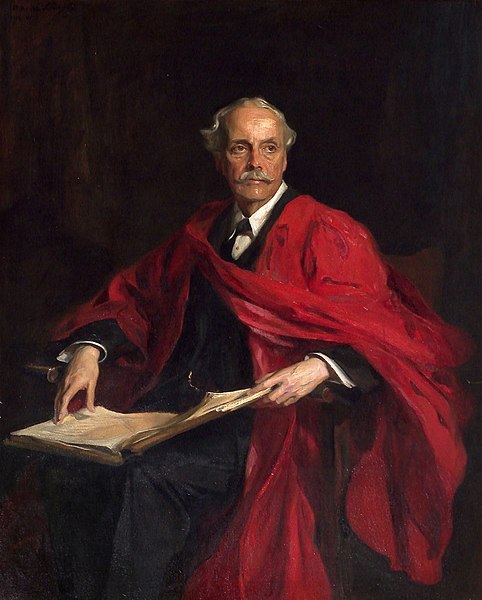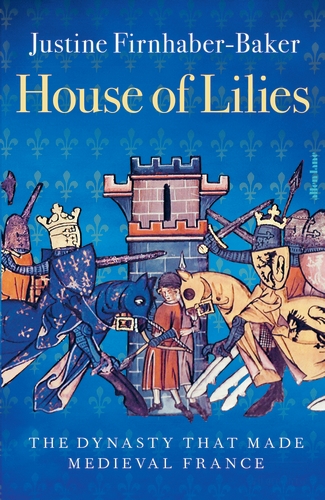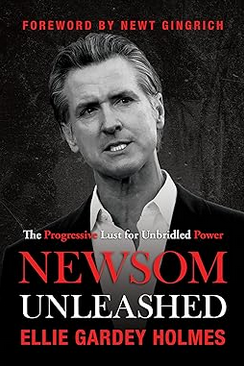Right wing Americans need their own version of consciousness raising and appreciating the “different ways of knowing” marginalized white Americans and right wingers have.
We’ve been trained by generations of left wing television, schooling, and academia to defer and treat the most noxious and stupid bleatings of uninformed women, non-whites, gays, and religious minorities as sacrosanct pieces of insight we’re supposed to wrestle with … whilst at the same time we’ve been treated to presume any white male over a certain age with unusual mannerisms or a disregard for left wing shibboleths is dangerously low status and deranged, when in reality it is the opposite.
Looking at the past 50-60 years, the Grumpy Granddads, hilly-billy mystics, and aging conspiracy theorists have consistently been more right than the mainstream.
If in 2002 you had to pre-commit to believing everything Alex Jones said, or everything CNN said for the next 20 years … You’d have been a fool to pick CNN. Indeed if you took their diet and medical advice you’d probably be dead.
The Archie Bunkers and Deryl Gribbles have consistently been years ahead of the mainline right for seeing the truths of the regime.
Now obviously like Greek heroes consulting the oracle at Delphi, or spirit questers visiting shamans … you have to assume you won’t understand half of what they say, most of it will fly over your head, and a good chunk probably isn’t even meant for you but the other spirits in the room …
But the signal to noise ratio of our hermits and kooks are thousands of miles beyond whatever left wing diversity chicks are getting from the native grifters they entertain at their campus events or the black “we wuz” consciousness raisers they shovel money at.
The old white shamans have been resisting the government since decades before you were born and they remember the all the little episodes official history likes to forget.
Like a young a adept consulting an old sage or a seeker consulting an old monk do not say “I don’t believe that” instead say “Hmm …” or “I am not yet that far down the path”.
Kulak, “The Myth of the Stupid Right”, Anarchonomicon, 2024-03-28.
June 29, 2024
QotD: The kooks and conspiracy theorists have a better track record than CNN
June 28, 2024
Ruling Medieval France
In Quillette, Charlotte Allen reviews House of Lilies: The Dynasty That Made Medieval France by Justine Firnhaber-Baker, a period of history I know mainly from the English point of view:
I’m a PhD medievalist, but the history of medieval French royalty was never my specialty, and my ignorance was vast.
I’d assumed, for example, that the French kings of the Middle Ages were mostly fainéants whose writ scarcely ran past the Île-de-France region (encompassing the city of Paris and its environs). The English monarchy across the Channel had been centralised since the days of Alfred the Great (849–899); but the French kings seemed to rule in a more symbolic capacity, being perpetually at the mercy of the powerful dukes and counts of autonomous French regions such as Normandy, Burgundy, Aquitaine, Anjou, Blois, Toulouse, and Languedoc. These regional rulers were technically royal vassals. But, in actuality, they saw themselves as absolute rulers in their own right, and so had no compunction against turning on the crown when they thought it would further their interests.
My impressions had been formed by accounts of the 17-year-old Joan of Arc’s having to personally drag the Dauphin (the future King Charles VII) to Reims for his coronation in 1429, and by Shakespeare’s historical plays, which portrayed the French as fops incapable of defending their territory against the robust and brotherly English during the Hundred Years’ War. Indeed, the whole point of that war (from the English perspective) was that, by dynastic right, large portions of France’s fractured political landscape actually belonged to England.
The one medieval French royal (by marriage) I did know something about, Eleanor of Aquitaine (c. 1122–1204), dumped her French husband, King Louis VII (1120–1180) after he bungled the Second Crusade, a costly and embarrassing adventure on which Eleanor had accompanied him on horseback. (“Never take your wife on a Crusade”, a medievalist friend of mine once sensibly quipped). To top off his disastrous final loss of his Crusader army in 1148 during an ill-considered attack on Damascus — which, although Muslim-ruled, was in fact an ally of Latin-Christian Jerusalem — Louis and Eleanor had failed to produce a son. No sooner was the ink dry on their divorce in 1152 (technically an annulment, since the two were Catholics), than she married Henry Plantagenet, son and heir of the duke of Anjou, who two years later became King Henry II of England. Henry quickly procreated five sons (among fourteen surviving children) with his new bride. Thus began the dynasty that would rule England for more than three centuries.
As everyone who has seen The Lion in Winter knows, Henry II’s relationship with Eleanor was far from tranquil, but two of their sons succeeded him to the English throne: Richard the Lionheart and King John (of Magna Carta fame or infamy, depending on your perspective). Henry was, besides king of England, duke of Normandy and count of Anjou, through his great-grandfather, William the Conqueror, and his mother, Matilda, who’d married Henry’s Anjevin father, Geoffrey, after her first husband, the Holy Roman Emperor Henry V, died in 1125.
Eleanor’s grounds for annulling her marriage to Louis had been that he was her fourth cousin, which violated the Catholic Church’s (selectively applied) consanguinity restrictions. But Henry was even closer kin, being her third cousin. The humiliated and (understandably) rankled Louis demanded that Henry, as his feudal vassal, explain why he’d failed to ask permission to marry (let alone marry his boss’s ex). Henry declined to reply, the feudal equivalent of declaring oneself in rebellion. Louis retaliated by invading Normandy — unsuccessfully — and trying to hold onto Eleanor’s Aquitaine on the claim that he’d become its duke by marriage (Henry II was meanwhile making the same claim) before giving up and remarrying himself in 1154.
A colour-coded political map of France during the twelfth century, indicating the early expansion of the Angevin Empire — i.e., the territorial possessions of the House of Plantagenet — from the time of Geoffrey V of Anjou (1113–1151). The Plantagenets would rule in England, and parts of France, till the demise of Richard III of England (1452–1485).
I’d assumed that French kings wouldn’t hold much in the way of real royal power until the time of King Louis XIV (1638–1715), who declared (perhaps apocryphally), L’État, c’est moi, and forced French regional nobles to reside in his over-the-top palace at Versailles (where they’d dissipate their incomes via elaborate court ceremonies instead of making trouble from their provincial power bases).
But the scales have now been knocked from my eyes, thanks to Justine Firnhaber-Baker, a professor of French medieval history at the University of St Andrews. The subtitle of her new book, House of Lilies: The Dynasty That Made Medieval France, refers to the Capetian dynasty founded by Hugh Capet (c. 940–996), who took his royal title in 987 A.D. Every French monarch, from Hugh’s reign to the French Revolution and beyond, had Capetian blood running through his veins — including the aforementioned Louis VII, who was a direct descendant of Hugh, and the bookish, dithering King Louis XVI, who was not, but who nevertheless went to the guillotine in 1793 under the derisive sobriquet “Citizen Louis Capet”.
Japan Decides on Peace – Are They Too Late? – War Against Humanity 137
World War Two
Published 27 Jun 2024The US bombers continue destroying Japanese cities with a rain of firebombs. As the country burns, the Japanese leadership and Emperor Hirohito finally realise they must seek peace.
(more…)
The weird and the W.E.I.R.D. gather at Vibecamp
Kulak, just back from a road trip to visit two pretty far offbeat gatherings, writes about what she heard and saw at Vibecamp:
VibeCamp is maybe the extreme intersection of Rationalist, Post-Rat, Effective Altruism, Silicon Valley, Quant Finance, and 5-10 other Cyber-Left, Grey-Tribe, autistic-centrist, techno-optimist blogging/twitter world. […]
Given that setup you could probably imagine the two overwhelming facts about Vibecamp:
- With rare exception everyone in attendance was shockingly intelligent. At random points throughout the festival I was having deep dive conversation on the geostrategic situation in Israel, the effects of Interest rate increases on venture capital, early 20th century Canadian poetry, and the fate of the petrodollar and the nature of Foreign Exchange markets.
- With rare exception everyone in attendance was incredibly weird. Some in very obvious ways visible at 100 paces, some in little uncanny ways it might take you an hour to isolate and identify.
[…]
The shape of the people jumps out at you. There were an incredible number of normal and average looking people, and a much lower portion of obese and Amerifat body-types than almost anywhere else in the US… Perhaps owing to the extreme intelligence and incomes of those involved … But in about 30-45% of people in attendance there’s just some unusual distortion of body proportions that would be remarkable and memorable encountered in an individual, but when assembled together gave the White and Jewish attendees (a combined 90+% of the total) the look that they were all descended from some unusual gothic ethnicity you couldn’t quite put your finger on. Some strange isolated country bordering The Netherlands, Ireland, Estonia, Romania, and the Basque region of Spain … That they’d all come from whatever part of the old country the Adams Family comes from.
[…]
These unusual heights (or lack there-of) were exaggerated by recurring extremes of bodyfat percentage, with several of the attendees (male, female, and between) having a spider-like absence of body fat entirely denoting some unusual hormonal profile expressed in a true kaleidoscope of personalities and interests.
This was expressed most keenly in the faces in which latent autism, and the aforementioned hormonal oddities, were expressed in large eyes and other unusual features, resting positions, and expression creases. Which weren’t all necessarily unattractive, but gave most of the women (and a good percentage of the men) a rather spaced out looks which remained somehow unique in each instance … As if they were all on another planet, but each a very different one from the one each other was on.
Thankfully with psychedelics and other pharmaceuticals they seemed able to meet up on a few mutually agreeable worlds.
[…]
Vibecamp attracts a great deal of biohackers and supplements freaks. Men, women, and others of extreme nutritional theories … and while some of them look like their theories haven’t panned out (the vegans) some look like they’ve discovered the Holy Grail.
This extreme bifurcation and assemblage of extremes was expressed right down to their vehicles… Walking through the parking lot there were $100,000 CyberTrucks and sportscars, whereas 1-2 cars down the line from them there were vehicles practically ripped apart with the engine showing under bodywork that’d long ago been scattered across some guardrail, reassembled just enough to (somehow) get back on the road but with not a dime spent on restoring it’s appearance. This wasn’t 1 car, this was a TYPE of car at the festival. Denoting in the owners some combination of MacGyver resourcefulness, Chadlike indifference, autistic obliviousness, and Victorian Frugality that I can’t but admire … (Or I suppose, possibly, extreme motor impairment. I don’t know that these accidents didn’t happen ON THE WAY to the festival)
[…]
The broken heterosexual male-nerd anxiety and tentativeness around sex and other forms of human interaction and intimacy could be cut with a knife … And it wasn’t like everyone had all been corralled and lectured night one or anything of the sort, somehow this broken progressive Dysgenic (actively failing to generate) culture had infected the urban male technological elite, from Bay Area techfounders, to New York Medical Experts, to DC Military Industrial Complex people, to British Forex Traders, to Dutch and Australians visiting the US for the first time … All of them had had that instinctive flinch trained into them … Some of the Wealthiest, Oddest, Most intelligent, and a small handful of the most attractive men in the world … had all been broken like horses, to flinch and start moving the minute the riding crop is grabbed.
Heartbreaking.
There’s an irony that the places which most engage in therapy language and most proudly proclaim their “acceptance” are almost always the most unforgiving … My friend continued to crash VibeCamp events after they tried to kick him out, and he might have been one of the only people in VibeCamp history to start dating a girl at the festival … (not a man to receive a priestly censor), but the sensitive nerdy men I encountered, with well meaning hearts and souls for poetry, hopeless.
So while I had a blast and enjoyed myself I certainly don’t expect it to be a culture that’s still there in 20-30 years, The people there will maybe produce 100-200 offspring in that time for every 500 that actually attended. If that.
Why the iconic RPG-7 is a weapon of choice for soldiers and militias
Forces News
Published Mar 15, 2024The RPG-7 has been used by armies, insurgents and terrorist organisations from all over the world, and has been produced more than nine million times.
The rocket-propelled grenade launcher can be used against a variety of targets, including armoured vehicles, fortified and sheltered positions, helicopters and infantry.
“Even the most basic RPG-7 round from the ’60s will penetrate the minimum of 26cm of rolled homogenous armour, which is your basic tank armour,” said Jonathan Ferguson, the keeper of firearms and artillery at the Royal Armouries Museum in Leeds.
(more…)
June 27, 2024
The Toronto Star wants Ontario to adopt Scottish booze regulation (but ignore the failure)
The Toronto Star always loves a good moral crusade, and if it also happens to fly in the face of whatever Premier Ford wants to do, then so much the better:
The Toronto Star is looking to Scotland to teach it how to reduce alcohol-related deaths. In an article titled “How Scotland started to kick its alcohol problem — and what Ontario could learn from it“, it pushes back on plans to liberalise Ontario’s state monopoly on alcohol retail, saying:
Ontario officials say they are fulfilling a 2018 election promise to increase “choice and convenience for shoppers and support Ontario retailers, domestic producers and workers in the alcohol industry”.
But Scotland has cut alcohol-related hospital admissions by 40 per cent and deaths by almost half. While in Ontario, alcohol-related admissions have risen by a third and deaths by almost half, according to the Canadian Centre on Substance Use and Addiction.
How did Scotland supposedly achieve this public health miracle?
The key part of Scotland’s landmark policy was aimed at reducing drinking by introducing minimum unit prices to make drinking more expensive.,/p>
Ontario already has minimum pricing and Scotland doesn’t have a state alcohol monopoly, so it is not obvious what lessons Ontarians are supposed to be learning, but put that to one side for a moment and consider the main claim.
Anyone who has been following events in Scotland knows that alcohol-specific deaths have risen since minimum pricing was introduced in 2018 and have generally risen since 2012 following a significant downturn in the years prior.
It is that drop between 2006 and 2012 that the Toronto Star must be referring to when it claims that deaths fell by “almost half” (actually a third). But the Scottish government didn’t pass any anti-alcohol legislation in those six years and it certainly didn’t have minimum pricing. The newspaper mentions that the drink-drive limit was cut, but that didn’t happen until 2014 and the evidence is clear that it had no effect on road accidents.
Since the Toronto Star doesn’t mention when the decline in alcohol-specific deaths took place, it is leading its readers to believe that it coincided with the introduction of minimum pricing and the lowering of the drink-drive limit. I call that lying.
It is strangely fitting that Canadians are being lied to about the “success” of Scotland’s alcohol strategy since the Scottish public were conned into accepting minimum pricing, in part, on the basis of lies told about the “success” of minimum pricing in Canada. The neo-temperance academic Tim Stockwell, who is quoted in the Star article, published a series of studies in the 2010s making some absurd claims about minimum pricing that were parroted by campaigners in the UK.
California’s Trudeau
In the New English Review, Bruce Bawer reviews Newsom Unleashed: The Progressive Lust for Unbridled Power by Ellie Gardey Holmes, a biography of California’s own Justin Trudeau:
I’ve been appalled by Gavin Newsom for years, but to read Ellie Gardey Holmes’s powerful and unflinching new book Newsom Unleashed: The Progressive Lust for Unbridled Power is to find one’s contempt for this hideous creature skyrocketing. If he has any redeeming qualities, any special gifts, any attributes that might illuminate an admirable and recognizably human side, there’s no sign of them here. This is a man who, despite having no discernible talent for governance or anything else, was lucky enough to be born into one well-off family – his great-grandfather co-founded the Bank of Italy, which later became the Bank of America – and to be, from earliest childhood, a sort of honorary member of an even richer family, the Gettys, his father being best friends with oil magnate Gordon Getty, who was like a second father to young Gavin.
Both men, his biological father and his second father, used their considerable influence from the beginning to help Gavin rise to power. Indeed, as surely as any Kennedy or Bush, Gavin Newsom was born into a political machine and bred to be a politician. After he and Getty played a big role in helping Willie Brown to get elected mayor of San Francisco, Brown named Newsom to the city’s Parking and Traffic Commission. Soon he was promoted to the Board of Supervisors, a post he held from 1997 to 2004. “Because of his lack of qualifications,” writes Gardey Holmes, “Newsom entered office entirely indebted to Willie Brown”. Observers referred to him, in fact, as “an appendage of Willie Brown”. Quick sidebar in the midst of this tale of political advancement: when his mother was dying, Gavin was pretty much AWOL, although he was present when she underwent assisted suicide – which, at the time, was illegal in California. Others had been prosecuted for their participation in such actions; Gavin was not, a foreshadowing of many other occasions on which he would be treated as exempt from the rules governing the behavior of ordinary mortals.
In 2003 he was elected mayor. One of his first acts was to authorize the issuing of marriage licenses for same-sex couples, even though he had no power to do any such thing. He even performed some of the marriages himself. This cynical move (which even California’s two Democratic Senators, Dianne Feinstein and Barbara Boxer, opposed) was a cheap stunt, carried out at the expense of gullible gays, whose marriages were soon enough ruled invalid by the state Supreme Court – but it had the desired effect. It made him a national figure and it won him the esteem of the mainstream media. Bob Simon told him on 60 Minutes that he might well have “set a record for instant fame in this country”.
From the beginning of his life in “public service” – that laughable term – Newsom’s vanity and ambition were flagrantly palpable. Although the New York Times described him during his mayoralty as the subject of “local adoration”, some San Francisco insiders resented his brazen focus “on self-aggrandizement and personal publicity” and his relative indifference to the city’s growing problems on a variety of fronts. Routinely, he stole credit for other people’s initiatives and acted as if he were exempt from the rules. A police officer drove him to his wedding in Montana in his official SUV – a definite no-no.
After two terms as mayor he had his eye, naturally, on the Governor’s Mansion – but polls convinced him to run for Lieutenant Governor instead. He spent two terms in that job, too, but hated it: he had no real power, no real staff, no real budget, and he felt disrespected by his boss, Jerry Brown. The initiatives he did support were destructive “progressive” bilge of the first water: for example, he was the only statewide elected official to support Proposition 47, which converted many felonies to misdemeanors, helping to set off the still ongoing rash of shoplifting that has made San Francisco, particularly, an international joke. For the most part, however, instead of addressing the state’s problems he put his energies into enhancing his national profile. He became a fixture on shows like Real Time with Bill Maher. He also wrote – or at least signed his name to – a book calling for the transformation of government by means of “digital technology”; the book’s argument didn’t make much sense, and even Stephen Colbert, usually a reliable left-wing shill, dismissed it as “bullshit”.
And then, inevitably, in 2019, Newsom became governor, thanks in no small part to massive donations from the Gettys and Pritzkers and his role as “the darling of the upper class”. California was already on the skids, but Newsom accelerated the process. He pulled National Guard troops from the southern border, saying that “[t]he border ’emergency’ is a manufactured crisis and California will not be part of this political theater”. He even had the state sue President Trump over his border emergency declaration, which according to Newsom was nothing but an expression of “division, xenophobia, [and] racism”. Instead of canceling one of the state’s notorious boondoggles – the program to build a staggeringly expensive high-speed rail line from San Francisco to San Diego – he shortened the planned route, so that the trains would run only between Merced and Bakersfield. This made the rail line an even more ridiculous proposition, but Newsom’s priority was not to provide a useful means of public transportation but to keep the state from having to return the federal money appropriated for the project to a government run by Donald Trump, who from the beginning of his governorship Newsom singled out as his personal enemy – an action that profoundly enhanced his popularity among California Democrats. Indeed, instead of seriously dealing with California’s jobs and education crises, Newsom focused relentlessly on attacking Trump. A hundred days into his governorship, he bragged childishly that California was “the most un-Trump state”.
Tim Worstall offers a rule-of-thumb for physical fitness
Rather than digging deeply into the esoterica of current research on the human body, Tim Worstall suggests there’s a handy rough metric you can use to judge your own physical fitness in any given area that sounds helpful:

“Exercise Running Fitness Physical Activity – Credit to https://homethods.com/” by homethods is licensed under CC BY 2.0 .
If you can do the whatever it is in under twice the Olympic time for it then that’s just fine. You may, at that point, step off the treadmill and go get more dip.
Not that I have any expertise in such things as fitness — just the normal amount of forced labour true of anyone who went through public school. It still seems to me to be a good guide.
True, the accuracy of this varies depending upon the specific activity. Managing 100 metres in 20 seconds is not a huge call — only just managing it would have small children jeering perhaps. But a mile in 8 minutes, yes, that does require a certain level of fitness and one that’s also indicative of, well, being at a certain level of fitness. Not that I’m going to do anything so gauche as check this, but that sounds like about the fitness tests for middle aged men in the military (longer if it’s in full kit).
One recent Tour de France time trial was around the 45 km mark. Which they did in 45 to 49 minutes (again, from memory) and doing 45 km in 90 minutes is something the average club cyclist would do on Granny’s bike, with the basket in front. A professional cyclist would need to add a sheepdog to the basket to be that slow. But being able to crank out 45 km on a bike — in that hour and a half — is showing a level of fitness that I take to be just fine for the average couch lizard.
So too the mile swim. Olympic swimming is 1500m, in 14 minutes or so. So, a mile in half an hour? That looks quite testing but if I can get close to that (in my 60s) then I’m happy. I can swim a mile, which in itself is a reasonable level of fitness, but that time would, I think, qualify as being “fit enough”.
It’s possibly true that this guide is more accurate at the longer distances. For being able to even perform the longer distances is itself a guide to fitness and the time recorded is less of an issue. It would also be possible that personal experience is playing a part here — I’ve always been comparatively better at longer. Few fast twitch fibre. So the “Worstall’s” could well be “As applies to Worstall” rather than something more general.
I’ve always been bad at endurance sports, but I’ve done fairly well in sprint-style, “twitchy” sports where you need fast reactions rather than long, slow-burn exertion. Tim’s rule of thumb seems to be more useful for runners, swimmers, etc., than for badminton players or fencers.
LAV III RWS NANUK – A Closer Look
Ontario Regiment Museum
Published Mar 14, 2024First look at the newest addition to the museum collection: LAV III RWS (Remote Weapon System variant) aka NANUK.
This Canadian designed and built military vehicle just arrived at the museum. Executive Director Jeremy Neal Blowers (aka @Tank_Museum_Guy) gives a very quick talk on the vehicle and a comparison with the original LAV III in the museum.
(more…)
QotD: Televised debates
As televised liberal-conservative dust-ups go, this one doesn’t quite hold a candle to the celebrated Bill Buckley vs. Gore Vidal cat fight during the 1968 Democratic National Convention. After wordsmith Vidal insisted that, no, really, the author of God and Man at Yale was a “pro-crypto-Nazi”, Buckley (who famously signs his letters in National Review, “Cordially …”) stopped speaking in his native Latin and declaimed: “Now listen, you queer, stop calling me a crypto-Nazi or I’ll sock you in you goddamn face and you’ll stay plastered”. That’s good stuff — and it was on broadcast TV for god’s sake.
Nick Gillespie, “Bob Novak: ‘That’s Bullshit … Goodnight, Everybody!'”, Hit and Run, 2005-08-05.
June 26, 2024
The Toronto-St. Paul’s by-election, part two
Continuing on from yesterday’s initial post on the outcome of the by-election in Toronto-St. Paul’s — which until 4:30 on Tuesday morning might have been the dictionary definition of a “safe Liberal seat” — as comments from vengeful anti-Liberal and whistling-past-the-graveyard pro-Liberal commentators appear. Here’s noted anti-Liberal David Warren from Parkdale which more often elects NDP candidates over Liberal ones:

The electoral boundaries of Toronto-St. Paul’s and nearby downtown Toronto ridings.
Detail of an Elections Canada map of Toronto.
Toronto-Saint Paul’s is defined, among the political experts, as a “safe Liberal seat”. For one thing, it is in the middle of Toronto, where the Conservatives have no members. (The NDP occasionally wins ridings like Parkdale.) According to a pollster, who is (in my opinion) a Liberal party hack, if the Liberals were to lose Saint Paul’s, it would mean that there were no safe seats left for them in Canada. None is the same as zero, incidentally.
Late last night, we learned that the Liberals had lost Saint Paul’s.
It was just a by-election, however. Toronto’s electorate enjoys the kind of deep somnolence that is not permanently correctible. Its people are typical of urban voters everywhere: they are easily convinced by “progressive” fantasists, and environ-mental snake-oil salesmen. Hence, liberal-lefties control all the big-city municipal governments, and provide marionettes to all the national puppet theatres. Those who voted against them will return to snoring mode after just a moment’s consciousness.
At The Line, a rare Jen Gerson column outside the paywall:
The goose. She cooked.
The toast. It burnt.
The frog. It boiled.
[…]
Anyway, my lack of political dedication was well rewarded because I’m now refreshed and well positioned to opine on the great momentous meaning of Don Stewart’s election to the House of Commons to represent the fine people of this section of midtown Toronto. Normally I wouldn’t get too fussed over a by-election anywhere, but in this case a fuss is impossible to avoid.
Two reasons; the first is that I have — in my lovingly Albertan way — referred to this riding as the Dead Marshes. For those who are not Lord of The Rings fans, this section of land is technically considered a reeking wetland that stretches to the south-east of Emyn Muil; a terrible stretch of land that sits just outside Mordor, and final home to the preserved corpses of many Conservative candidates, staffers, volunteers, and hopes and dreams. Every once in a while, their enchanting methane soul lights flare forth, entrancing the unwary or the naïve into the swamp.
Which is a very nice way of saying that St. Paul’s is a bastion of the ruling Laurentian Consensus, a Liberal fortress long held by Carolyn Bennett, and untainted by the stain of Conservative voting intentions since 1993. And yet, Mr. Stewart ventured forth undaunted, and found his path into Mordor (a metaphorical stand in for either Toronto, or Parliament. Interpret as you see fit).
The second reason that this election cannot be ignored is that both the Liberals and the Conservatives have invested it with so much symbolic weight, that the outcome will herald political changes of one kind or another. A 43 per cent turnout rate in a by-election is healthy — even high. Nobody can chalk that outcome up to numerical wonkery. Conservatives were motivated, and progressives were not. The signal is clear.
It is now impossible for an increasingly unglued Liberal caucus to overlook that they are losing. They are losing very badly. A sustained 20-point Conservative lead has been made manifest. If St. Paul’s can crash, they are all at risk. And they can no longer wave that fact away by sniping at pollsters, or blaming misinformation. A plurality of Canadians think they suck at governmenting. This must now be addressed.
Tristin Hopper on the social media site formerly known as Twitter:
The Korean War Begins – Week 1 – June 25, 1950
The Korean War by Indy Neidell
Published 25 Jun 2024Despite the fact that there have been clear signs that they might soon invade South Korea, when the North actually does in force on June 25th, 1950, it comes as a complete shock to the world. But is this a full invasion, or just cross border raids such as there were in 1949? And is there something more behind this? Stalin’s Soviets? Mao’s Chinese? And how will the world react? Find out this week as our week by week coverage of the war begins!
(more…)
Lord Balfour
Arthur Lord Balfour, Conservative Prime Minister from 1902 to 1905, is perhaps best known for the Balfour Declaration issued during World War 1 that established the formal goal of an independent homeland for the Jews in the Holy Land. Who was he? Barbara Kay’s essay originally published in the Dorchester Review was recently reposted at Woke Watch Canada:

“Arthur James Balfour, 1st Earl of Balfour, KG, OM, PC, Prime Minister and Philosopher” portrait in oil by Philip de László, 1914.
From the Trinity College collection via Wikimedia Commons.
Why was the aristocrat Lord Balfour, the social antithesis of this humble Jew from the Pale of Russia, so taken with Weizmann’s vision that he was willing to expend political capital and exert so much effort to see it realized? Who was Balfour? What was he?
Arthur James Balfour was born at his family seat, Whittingehame, in East Lothian, the “granary of Scotland”. A forebear had made a fortune in India in military materials, so he was financially secure for life, and socially connected at the highest levels.
Having lost his father when he was 7, Balfour was lucky in his mother, a strong-willed and educated woman who, according to Mrs Dugdale, inculcated the idea of duty as “the uncompromising foundation of his character”. He attended Eton and Cambridge, where he was described by a friend as “a man of unusual philosophy and metaphysics”, who could hold his own with the Dons (professors), “some of them men of undoubted genius”. He was devoted to his extended family, and much beloved by his nieces and nephews.
In his essay “Arthur Balfour: a Fatal Charm”1 cultural critic Ferdinand Mount cites “nonchalance” as Balfour’s defining trait. Legendarily indolent, he rarely rose before 11 a.m., claimed never to read newspapers, and disdained the ritual schmoozing of fellow backbenchers expected by his peers in the Members’ Smoking Room. Mount says he was “indifferent to what his colleagues, the public or posterity thought of him or his policies”.
This loftiness — echoed in his unusual physical height — was perceived as admirable or maddening according to the observer and circumstances. Churchill said of him: “He was quite fearless. When they took him to the Front to see the war, he admired the bursting shells blandly through his pince-nez. There was in fact no way of getting to him.”
His self-sufficiency was no act. Sports-mad, he skipped lunch with the Kaiser to watch the Eton and Harrow cricket match, and when in Scotland might play two full rounds of golf a day (his handicap of 10 was better than P. G. Wodehouse and about the same as thriller writer Ian Fleming’s).
Balfour sounds from my description so far as if he was something of a playboy, but that is a very partial portrait. He was also known as “Bloody Balfour” for his readiness to endorse police action and his apparent indifference to their cost.
The Irish loathed him. In 1887 he became personal secretary for Ireland under his uncle, Lord Salisbury, just in time to enforce the Coercion Act against the volatile Irish Land League. Indeed, Balfour’s parliamentary critic William O’Brien saw him as a man who harboured a “lust for slaughter with a eunuchized imagination” who took “a strange pleasure in mere purposeless human suffering, which imparted a delicious excitement to his languid life”.
One hopes this accusation of actual sadism is an exaggeration of Balfour’s indubitable detachment. Yet indifference to human life is certainly not an uncommon charge laid against intellectuals for whom ideas loom larger in their claims to attention than the fate of those beyond their particular tribes.
For balance, we have Barbara Tuchman’s assessment:
Balfour had a capacious and philosophical mind. Words to describe him by contemporaries are often “charm” and “cynicism”. He had a profound and philosophic mind, he was lazy, imperturbable in any fracas, shunned detail, left facts to subordinates, played tennis whenever possible, but pursued his principles of statecraft with every art of politics under the command of a superb intelligence.
Fortunately for his temperament, Balfour’s life circumstances had landed him at the centre of a genuinely intellectual circle. His brothers in-law, for example, were Lord Rayleigh, who became head of the Cambridge Laboratory and won the Nobel Prize for Physics, and Henry Sidgwick, the Cambridge philosopher who with his wife Elaine Balfour founded Newnham College.
Politically, Balfour enjoyed both dramatic success and dramatic failure. He led the Unionist Party longer than anyone before him since Pitt the Younger. And he was a minister longer than anyone else in the 20th century, including Winston Churchill. Balfour was the only Unionist who was invited to join Asquith’s first war cabinet, and continued as foreign secretary after the coup that brought Lloyd George to power.
As Churchill put it: “He passed from one cabinet to the other, from the prime minister who was his champion to the prime minister who had been his most severe critic, like a powerful, graceful cat walking delicately and unsoiled across a rather muddy street”.
One of Balfour’s teachers at Eton described him as “fearless, resolved and negligently great”. On the other hand, Mount tells us, “indecisiveness” was his bane. He would stand paralyzed in the mezzanine of his London home agonizing over which of the matching staircases to descend by. He could love — the great love of his life died after an unreasonably long engagement — but, allegedly too staggered by the loss of his almost-fiancée, he never married.2 He could not be pinned down politically on many issues, a matter of great frustration to his colleagues, and this cost him dearly. As Mount notes, his charm was indisputable, “but more than charm he would not give” and “in the end, the charm is all that remains.”
Balfour fought three general elections as party leader and lost them all. His premiership lasted less than four years and ended in a Liberal landslide in 2006, a great electoral humiliation in making him the only prime minister in the 20th century to lose his own seat. He did not seem greatly to repine at the rejection, though, and it is thanks to the loss that he had time to further his education on the Zionist movement.
1. Mount, Ferdinand, English Voices (2016), pp 358 ff.
2. One suspects that even if May Lyttleton had lived, Balfour would have avoided marrying her on some pretext or other. There is no evidence that Balfour was a closeted homosexual, but he may have been asexual. He enjoyed an “amitié amoureuse” with (married) Mary Elcho for 30 years involving little or nothing in the way of sex, after which she wrote to him, “I’ll give you this much, tho, for although you have only loved me little, yet I must admit you have loved me long”.
Why the Allies Lost The Battle of France
Real Time History
Published Mar 1, 2024In May 1940, Nazi Germany attacks in the West. The Allied armies of France, Britain, Belgium, and the Netherlands have more men, guns, and tanks than the Germans do – and the French army is considered the best in the world. But in just six weeks, German forces shock the world and smash the Allies. So how did Germany win so convincingly, so fast?
(more…)










